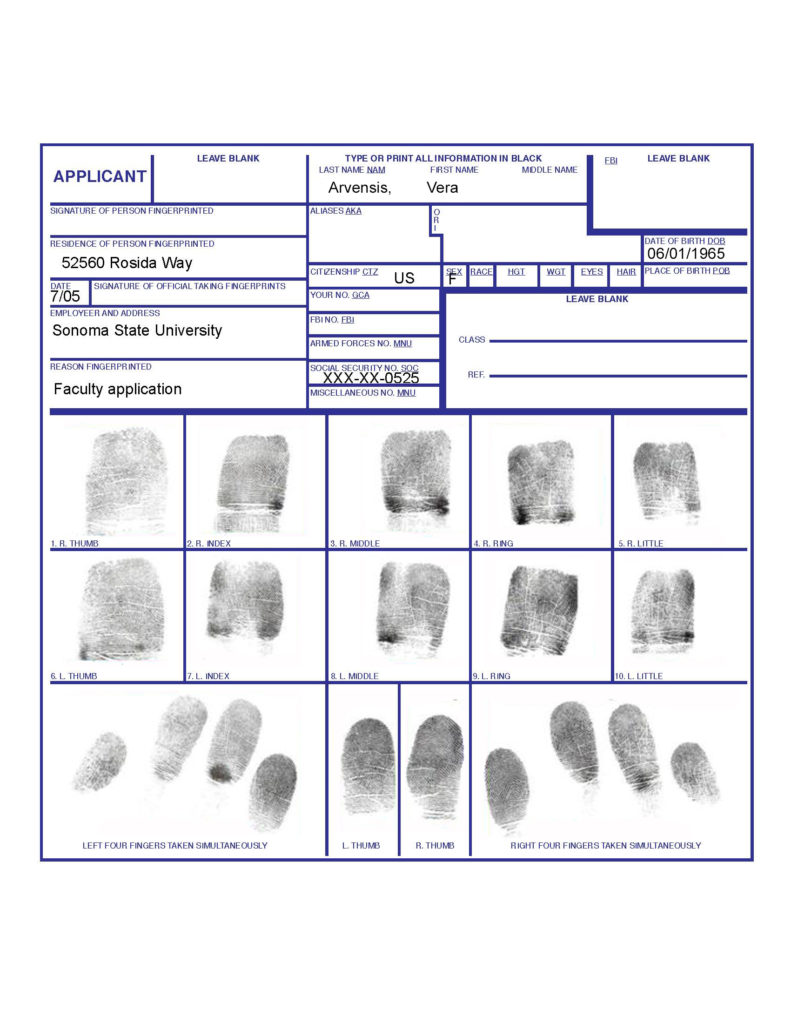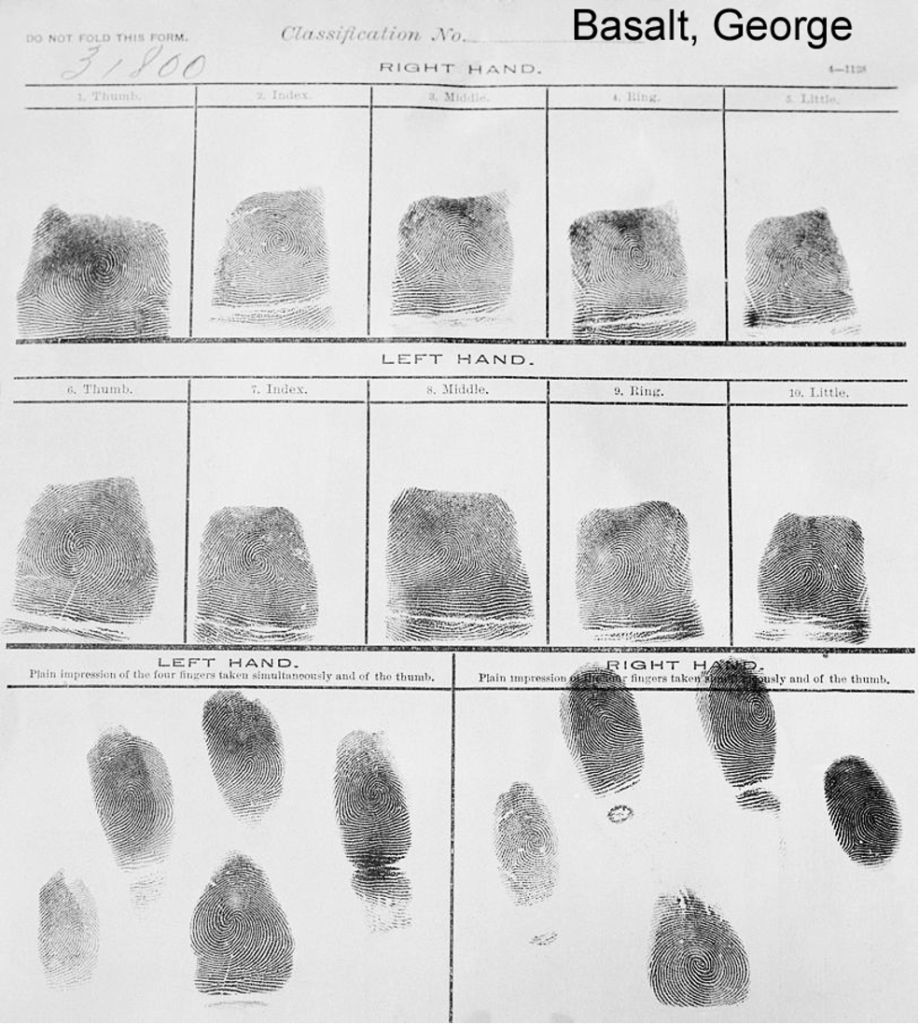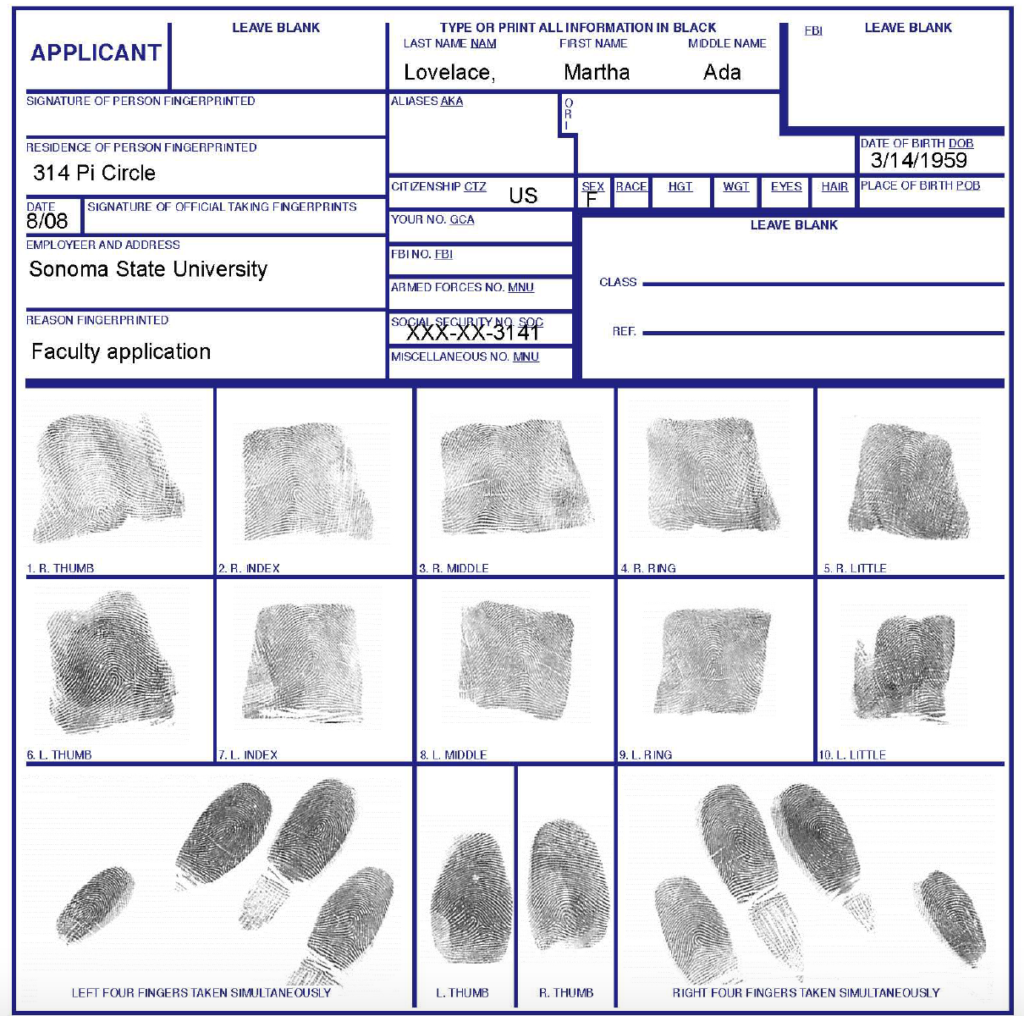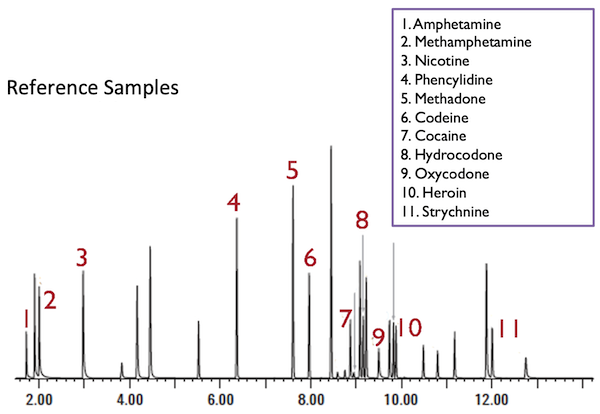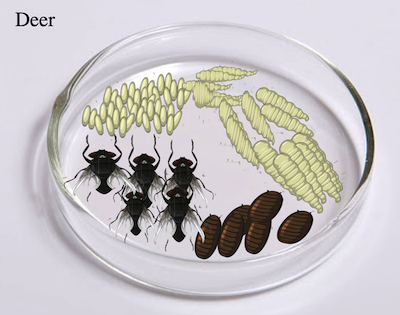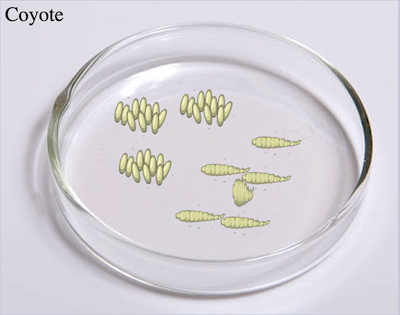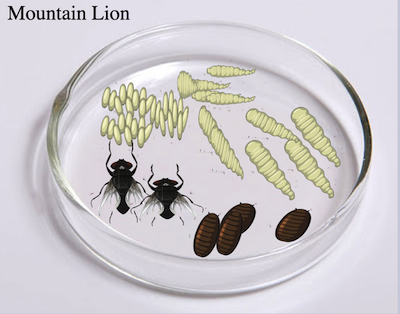Make a COPY of the worksheet to your own Google Drive: https://docs.google.com/document/d/1noMzXi9vXbXVZX3woZrFSTaHO52ZJ5UKL0375mSvSVY/edit?usp=sharing
The Language of Science
Start by completing the “Language of Science” activity linked below. After completing the vocabulary activity, return to this page to do the Forensics lab.
CSI Sonoma State: Forensics Lab

Meet Bella

Bella is a four-year-old Dalmatian. When Anita, one of Bella’s owners returned home from work yesterday and discovered the dog missing, she called the 911 to report that Bella had been dognapped. When asked if anyone else had access to the house, Anita reported that her husband, Roger had been due home from a business trip that day, but had left her a voicemail message stating that his arrival would be delayed a day or two, due to bad weather.
The FBI has been called in to try and find Bella, and we have been asked to help them with their investigation. Throughout this lab, you’ll see entries titled “Find Bella” – these contain clues to help you solve the case.
Find Bella
When members of the Crime Scene Investigation team arrived at the house, they collected the following evidence:
- Several short and long hairs from the kitchen floor
- Fingerprints from various locations in the home, including the doorknob of the back door and the kitchen sink
- A small sample of blood from the kitchen floor
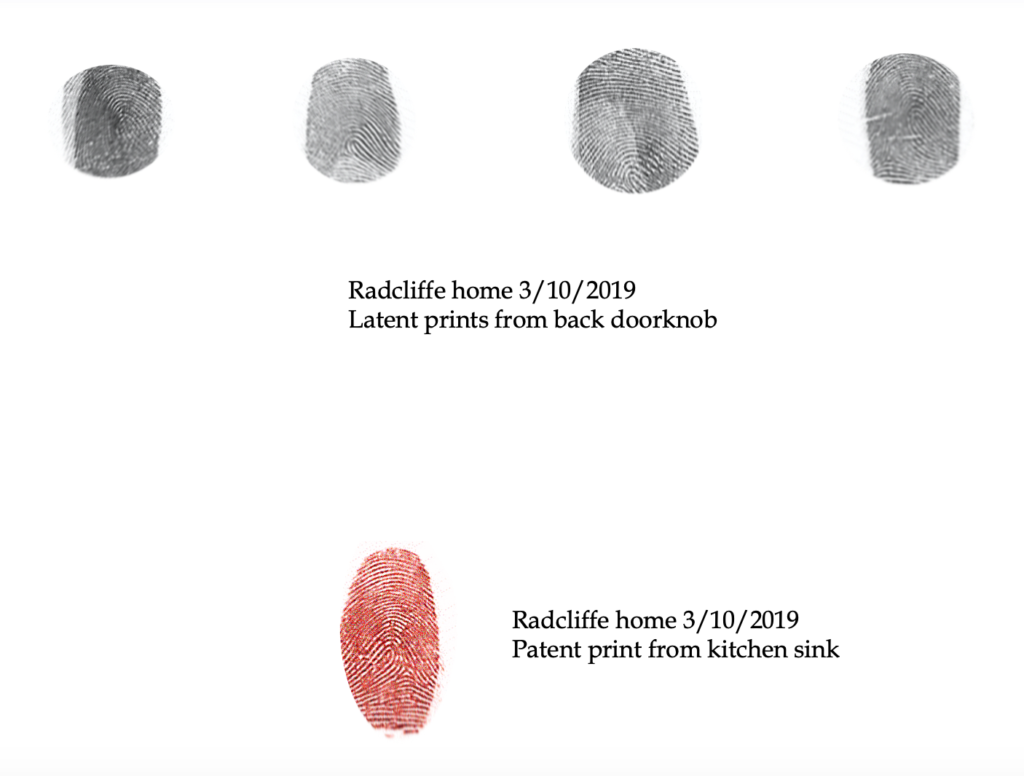
You also have eye witnesses who reported seeing three different people on the property at some point during the day. It’s likely that one of these three is the culprit. Here is some additional information about each suspect during today’s lab.
| Arlene Lovelace Not at home when investigators came by to question her Investigators interviewed her employer: Had not been to work for past three days, due to back injury She slipped and fell while smoking a cigarette outside her office |  |
| George Basalt Told investigators that he was in the neighborhood selling magazine subscriptions Dog hairs were found on the suspect’s clothing; he claimed he had walked home through the local dog park |  |
| Vera Avensis Not at home when investigators came to question her Her son allowed them to search the house (??!?!!?), and discovered that her overnight bag and toiletries were missing Her credit card was last used at a local pet store, and then at a gas station, where she filled her tank and bought a pack of cigarettes |  |
It will be up to you to analyze the forensic evidence found at each station of our crime lab, and try to determine whether or not one of the suspects above took Bella. We will also explore some forensic techniques that are not directly related to this case, but should be interesting, nonetheless.
Examine Your Own Fingerprints
To complete this activity, you will “fingerprint” yourself on scratch paper using common household items. If you don’t have an actual inkpad at home, you can make your own in one of the following ways:
- “Color” your finger with a water-based marker, and press your finger to the paper before the ink dries.
- Make an “ink pad” with a graphite (#2, etc) pencil. Use the pencil to color in a square on a piece of paper. Cover the paper thoroughly, then press your finger into the square. You should pick up some of the graphite on your finger ridges. Press your finger into a black piece of paper to see the fingerprint. Alternately, you could press your “inked” finger onto a piece of clear cellophane tape to capture the pattern in the ridges.
- Mix equal portions of water and liquid tempera craft paint. Stir thoroughly to incorporate the two. Place a dry sponge into the mixture to soak up the colored water, then squeeze it to drain excess.
- What is the general friction ridge pattern of each finger? (Report these percentages to your lab instructor, for an activity later in the lab).
- Can you identify any minutiae? Circle them on the prints above, and list them below:
Find Bella
Examine the fingerprint evidence shown below. Prints from all three suspects are included, as well as the prints found at the crime scene. (Click on each image to enlarge).
- Which of our suspects appear to have been at the scene of the crime, based on the reference prints provided match the fingerprints lifted from the doorknob or the kitchen counter?
- List the characteristics that lead you to believe they are a match:
- List the minutiae that lead you to believe they are a match:
Biotechnology
DNA fingerprinting is a laboratory technique used to determine the probable identity of a person based on the nucleotide sequences of certain regions of human DNA that are unique to individuals. DNA fingerprinting is used in a variety of situations, such as criminal investigations, other forensic purposes and paternity testing. In these situations, one aims to “match” two DNA fingerprints with one another, such as a DNA sample from a known person and one from an unknown person.
- Which man (Dad 1 or Dad 2) appears to be the father, based on the results of gel electrophoresis Paternity Test below?
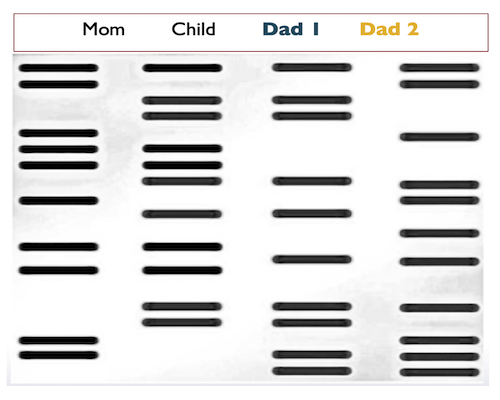
Mass Spectrometry is an analytical tool used to identify unknown compounds via molecular weight determination. In forensic investigations, it can be used to identify the compounds found in:
- Toxins in tissues or body fluids
- Dyes in carpet fibers
- Glass fragments
- Paint samples
- Accelerants or explosive residues
Chemicals are identified by looking at the peaks for a characteristic signature (the height of the peak).
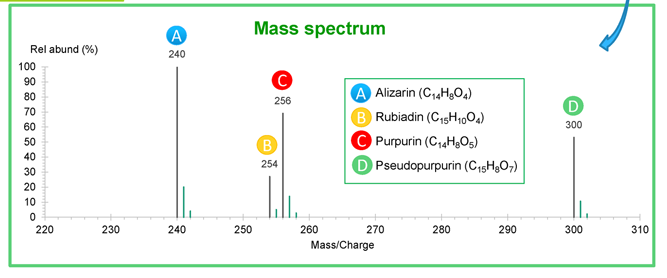
Find Bella
- Which of the suspects appears to have been present at the crime scene prior to Bella’s disappearance?

Analyze the results of GC/MS performed on a sample of blood collected from the crime scene.
- Does it appear that the suspect had any drugs in their system at the time of Bella’s disappearance? If so, list them.
Analyze the results of the gel electrophoresis that was run on DNA found at the crime scene, as well as blood taken from the three suspects.
Calculating Time of Death using the Stages of Death
Use the tables below to estimate the approximate time of death for the situations listed in your lab worksheet. Explain each of your answers:
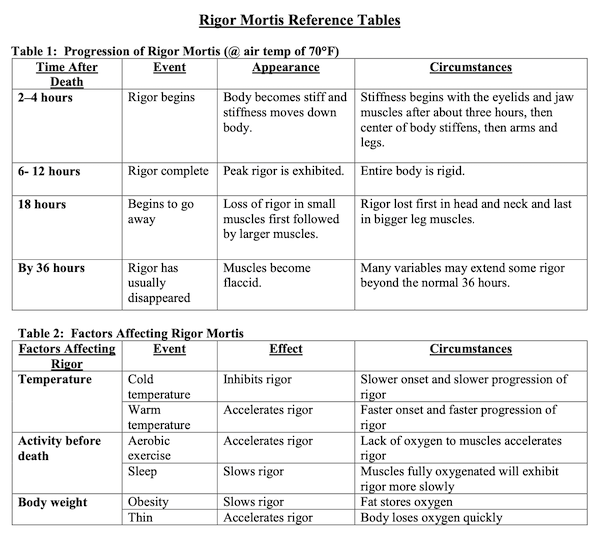
1. A body was found with no evidence of rigor.
2. A body was found exhibiting rigor throughout the entire body.
3. A body was discovered with rigor present in the legs, but no rigor in the upper torso.
4. A body was discovered in the woods. The man had been missing for two days. The average temperature the past 48 hours was 50 degrees Fahrenheit. When the body was discovered, it was at peak rigor.
5. The victim was found in a snowbank alongside a road. His body is rigid. How long has he been dead? Explain your answer.
Use the information about Algor Mortis below to answer the following questions. Show your work.

6. Approximately how long has the victim been dead if his body temperature was 33.1°C (91.6°F)?
7. A body found outside in the winter has a temperature of 33.1°C. Has the body been dead a longer or shorter time than in #6? Explain your answer.
8. What is the approximate time of death if the body temperature was 15.6°C (60.8°F)?
9. What is the approximate time of death if the body temperature was 24°C (75°F)?
Describe the impact on time of death for each of the variables listed below. If you based your time of death estimates strictly on temperature loss to be 10 hours earlier, would you reduce your 10-hour estimate or increase your 10-hour estimate if the body had been:
10. Naked
11. Exposed to windy conditions
12. Suffering from an illness prior to death
13. Submerged in a lake
Follow-up Question:
14. What is the significance of determining the time of death? Why is it so important to crime-scene investigators to take the temperature of the deceased body if the person is already known to be dead?
Determining Time of Death with Entomology
For the case studies below, examine the insects collected from each corpse, and use the chart provided to estimate the time of death.
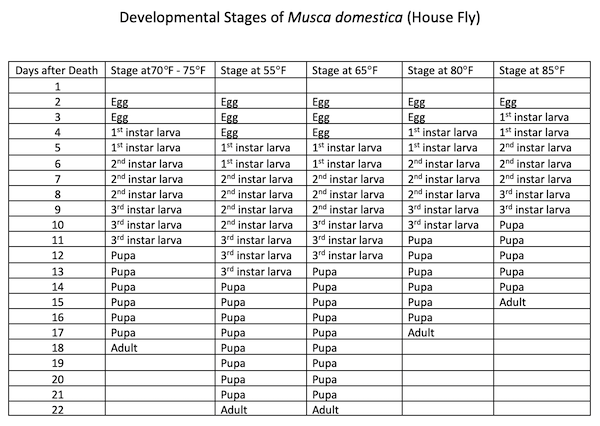
INVESTIGATION #1
Police Report: The body of a female deer was found behind a fence along a busy two-lane road on the edge of the city limits of Santa Rosa. Animal Control was called and reported no apparent wounds on the body. It was not hunting season.
Weather Report: Daytime temperatures have been fairly consistent for the past three weeks, ranging from 70 to 74º F.
1. Approximately how long has this animal been dead?
2. Why are maggots of different ages found in the body?
3. Other than temperature, what abiotic (external to the corpse) conditions would you want to obtain from the weather station to help you to be more confident of your time of death estimation?
INVESTIGATION #2
Police Report: The body of a coyote was found in an empty dumpster in the alley of a Rohnert Park neighborhood. Hairs around the animal’s neck were worn away in a band pattern. The dumpster lid was closed, and the temperature inside was recorded as 55º F.
Weather Report: Daytime temperatures have been variable over the past three weeks, ranging from 50 to 65º F.
1. Approximately how long has this animal been dead?
2. What effect, if any, do the outside temperatures have on your estimation of time of death?
3.What does the location and condition of the body suggest about the situation? Explain.
INVESTIGATION #3
Police Report: The body of a mountain lion was found in a dense stand of trees far from any urban area on Sonoma Mountain. Maggots were found concentrated in the head and region behind the shoulder.
Weather Report: Daytime temperatures had been average over the past three weeks, ranging from 70 to 73º F. Temperatures in the woods would be approximately 5 degrees cooler due to the lack of sun in the shady environment.
1. Approximately how long has this animal been dead?
2. What effect, if any, does temperature have on your estimation of time of death?
3. Can you speculate about why the insects were concentrated in certain parts of the mountain lion’s body?
Fingerprint Pattern Percentages
You will not be able to compare your fingerprint results to those of other students, but you can compare them to the national average, show below. How close are your percentages to the national average?
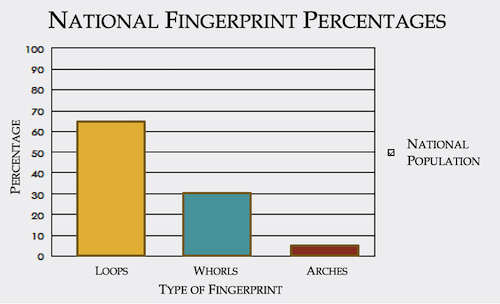
Find Bella
At this point in the lab, you should have enough information to narrow down the suspect pool.
- Which suspect was responsible for the fingerprints left at the crime scene?
- According to GC/MS analysis, what substances were found in the suspect’s blood?
- Which suspect was identified with gel electrophoresis?
- Which of the suspects do you believe was responsible for Bella’s disappearance?
After submitting your assignment as instructed by your professor, ask your lab instructor what happened to Bella, and find out you’ll find out if your conclusion matches the information discovered by other members of the investigation team.
